When buying vintage furniture, online or in person, can be daunting. Vintage was always cool but niche. Pandemic-related supply chain delays elevated the importance of the already made, readily available vintage furniture, and the trend will not slow down any time soon.
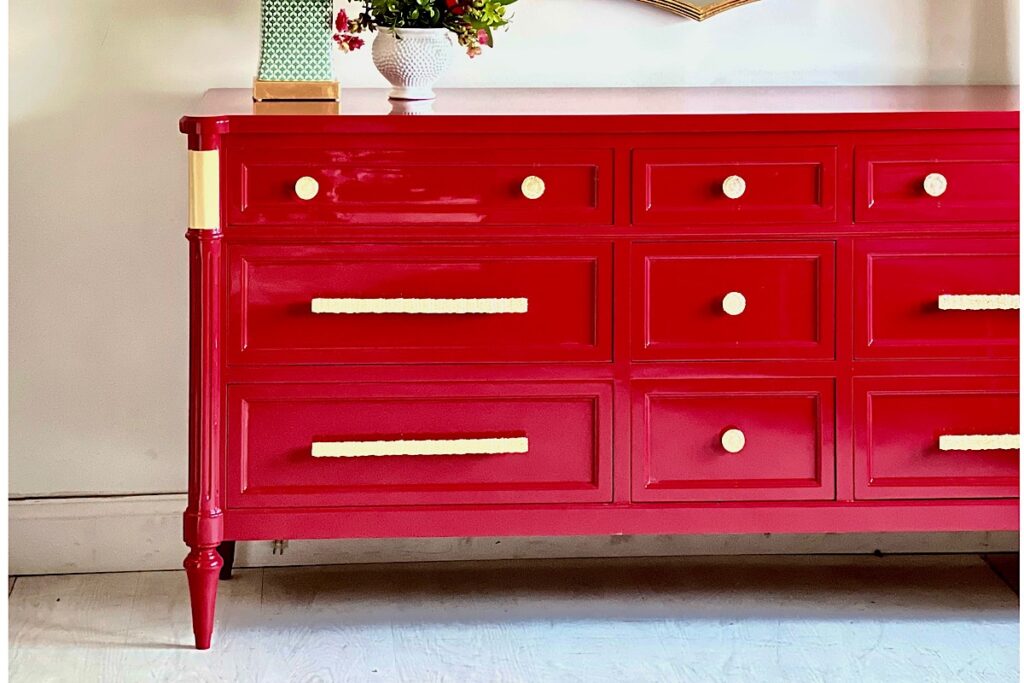
I buy thousands of pieces of furniture every year, and here are the things that I look for when shopping for vintage furniture on Facebook Marketplace (FBMP) or estate sales.
- Dovetailed joints are a must
- Cool details are pretty much essential
- Plain Jane is fine, depending on where the piece is going
- Bold, unique hardware
- Check for (the absence) of smells. Any kind of smell!
- Check for water damage, loose joints, and any operational issues.
Look For Dovetailed Drawer Joints
The best part of buying vintage furniture is you get the fine joinery at a fraction of what it would cost today. The most desirable feature of vintage furniture is dovetail drawer joints.
Dovetail is a type of joinery that was very common for making drawer boxes in the furniture made in the 1900s. Dovetail joinery is the gold standard of drawer joinery, and you can see why.
Below is a piece of furniture from the 1940s (my guess), and the joints look solid. There are no loose joints and no issues overall, even though the previous owner must have opened and closed it thousands of times.
It’s very easy to identify dovetail joints. They look like two sets of teeth perfectly interlocked and held together by glue. The design creates mechanical fastening and chemical (wood glue) bonding, making them rock solid.
Look For Hardwood Construction
To be honest, you don’t have to look. It’s usually there. Most of the furniture from the 1940s and 50s is solid mahogany. I have seen many beautiful mahogany drawers and many “solid mahogany” plates inside dressers. It’s a pretty thing.
High-end vintage like Henredon has solid cherry drawers, which, in my view, is a very lavish feature. Hardwood became harder to come by once plywood became mainstream.
Your 60s and 70s faux bamboo and other furniture has lots of plywood inside it. It’s still 1000x better than the particle board junk of Ikea furniture.
Look For Interesting Details
The beauty of vintage furniture is in layers upon layers of details present in abundance on every piece. I live for the details of vintage furniture. Like this dresser with carved details. So charming.
Carved Details
Carved details add charm to any piece of furniture. The interplay of light and shadow created by the intricate carvings creates a sense of depth and dimension.
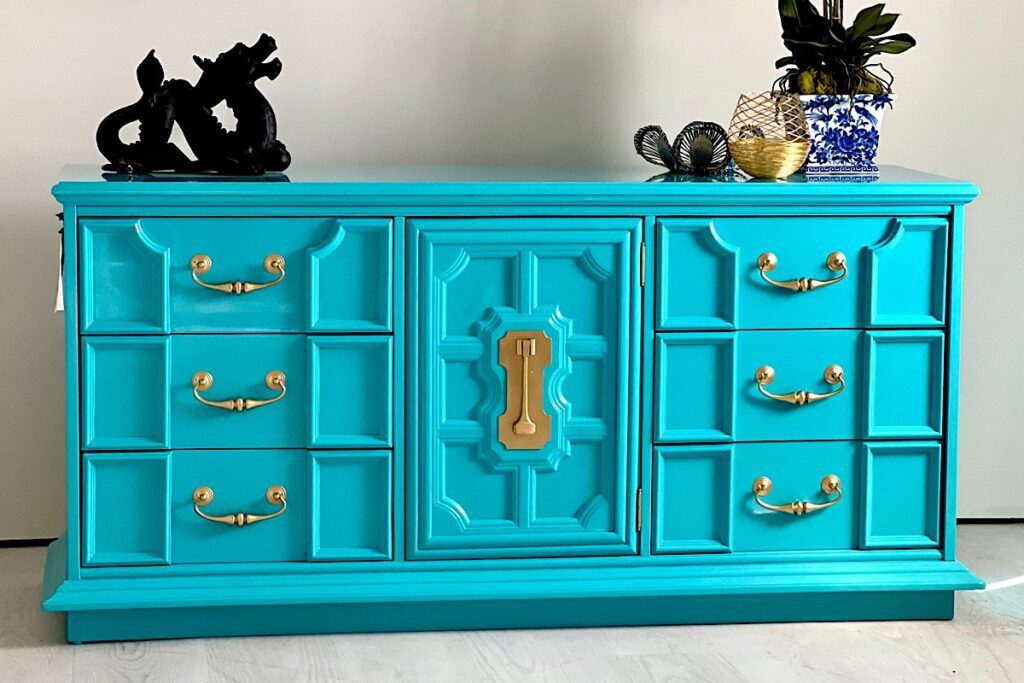
Columns & Turned Legs
Column-like details and turned legs are unique features of handmade furniture. The legs on this dresser were turned on a wood lathe. They create visual interest.
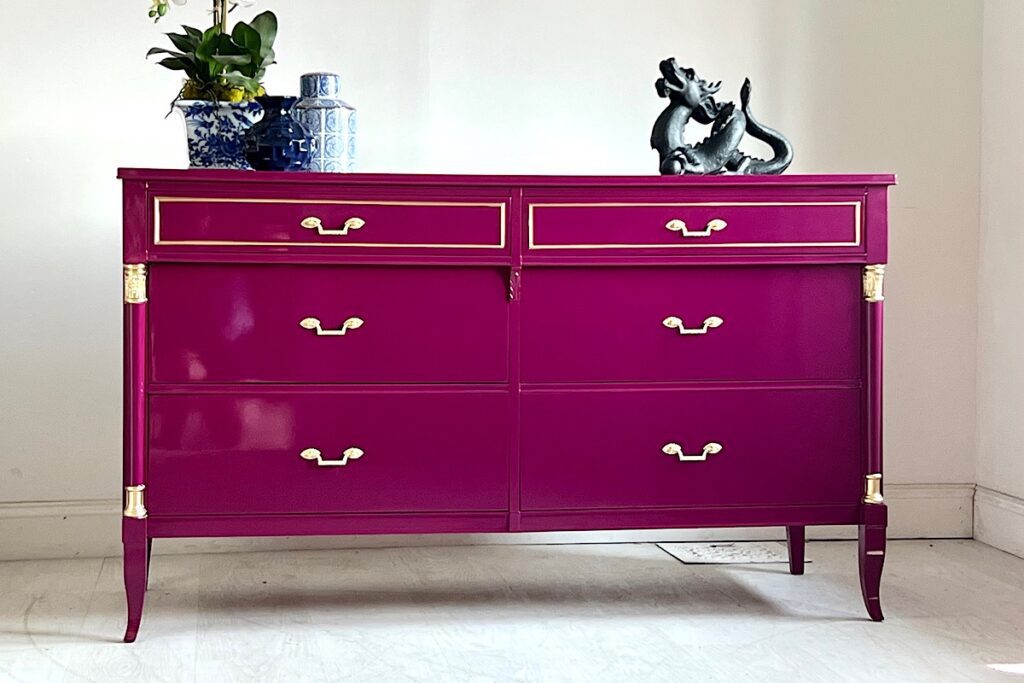
Beaded trim & Other Moldings
Dental moldings, beaded trims, and many other types of embellishments are some of the coolest features of vintage furniture.
Bent Wood
The iconic Broyhill Brasilia has unique bentwood details that create an interplay of light and shadow.
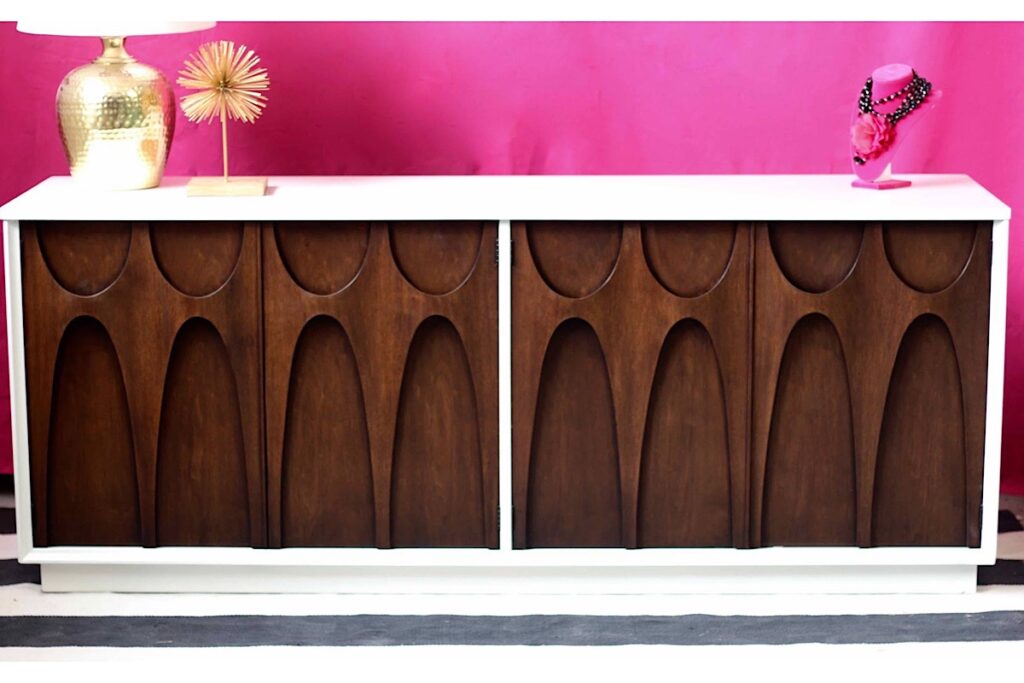
Plain Jane is Fine, Too
Sometimes, plain Jane pieces are a great addition to an otherwise busy room. If you have many other strong design elements in a room, a plain piece of furniture gives the viewer’s eyes a resting spot.
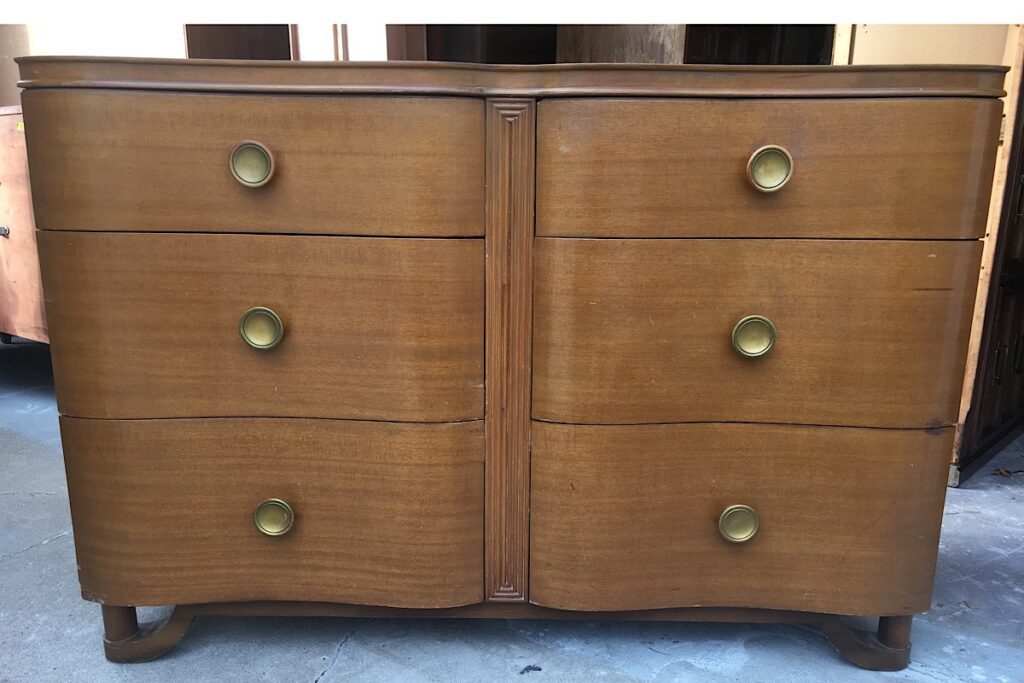
Plain pieces can also be a canvas for bold colors and modern chunky hardware. A blah piece of furniture is the perfect choice to show off the furniture jewelry. In fact, it’s my favorite thing to do.
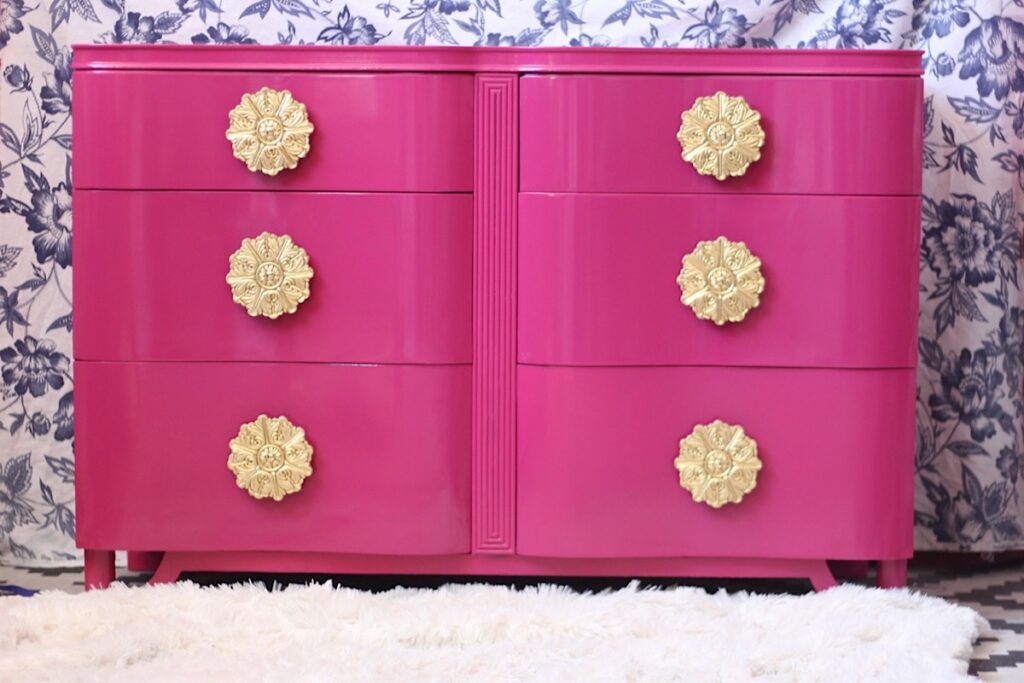
Bold Hardware
Vintage hardware is so so cool that I can sing its praises for days. Even the average ordinary vintage pieces have pretty, dainty, oversized, chunky, or even funky hardware. Once painted, the hardware pops like jewelry & looks spectacular.
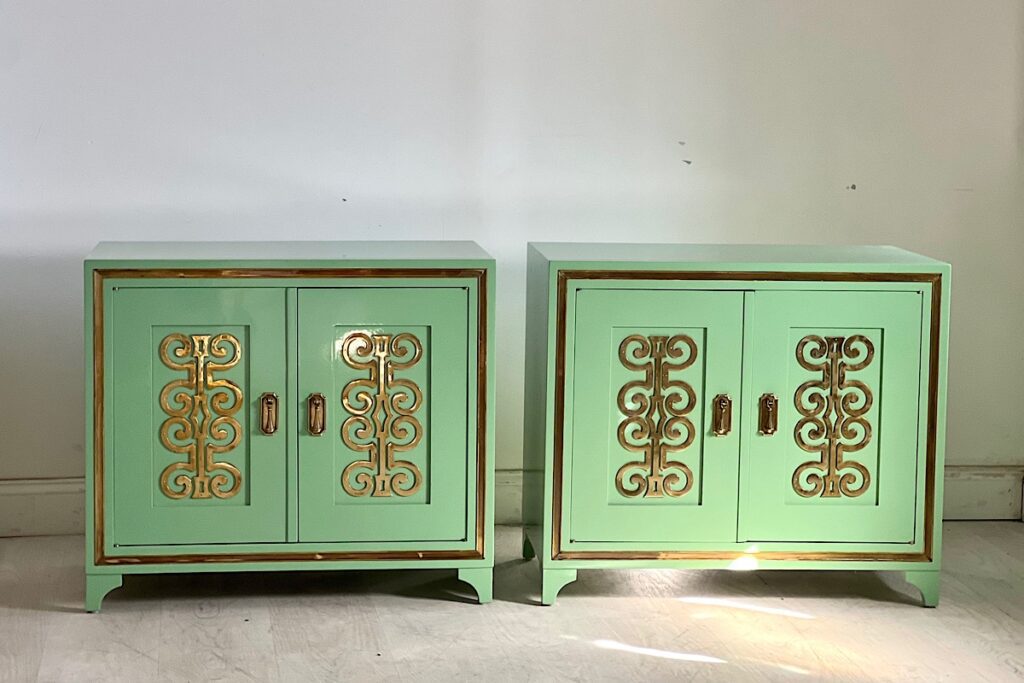
Don’t let the patina fool you into thinking that $2 mass-made pulls are a suitable replacement. Look at the fantastic hardware and the beauty it adds.
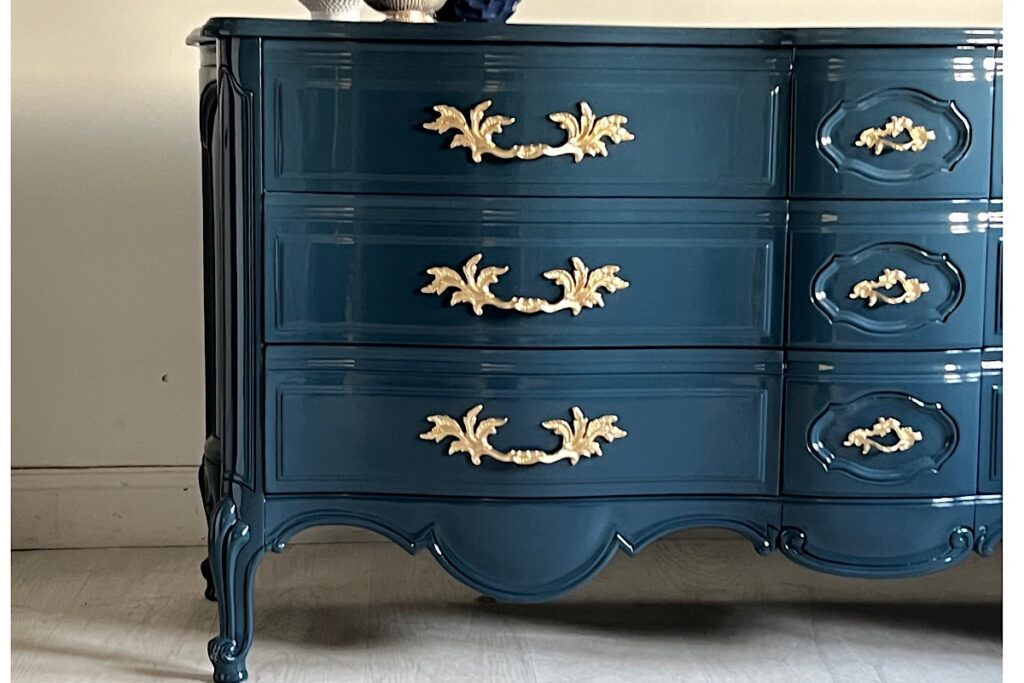
Now, let’s talk about the things you should avoid when buying vintage furniture. Seek for the absence of the following things-
Make Sure There Are No Weird Smells
I always ask the seller in advance or at pickup about any presence of funky odors. At the time of pickup, I make sure I open the drawers and stick my nose in them to rule out any smells.
Do you know how I feel about buying furniture with odd smells? It’s an absolute no-no for me. Besides the smoke smell (which is very obvious), I check for musty smells, perfume spills, etc.
Wood is like a sponge; therefore, smells penetrate deep into it. The odors will not go away overnight or over a fortnight. I highly advise against buying smelly furniture. It’s a fool’s errand.
Will the smell ever neutralize? Sure! How long am I willing to wait? I don’t want to wait, nor do I want to take the risk of buying permanently smelly and potentially unusable furniture. My advice? Stay away from them.
Check For Common Problems
Vintage is “used” furniture, after all. Someone else used a piece of furniture for decades, and now you own it. Some common problems are unavoidable. Most are easy to fix; you need to know what you are getting into when buying a project.
Loose Joints
If joints come loose, it’s not a big deal. A squirt of wood glue and clamps is all it needs. I would not be buying a piece of furniture that feels wobbly. Structural integrity is not negotiable and can become a huge project.
Water Damage
Water damage is a spectrum. A little bit of raised grain from a glass sitting on a dresser top is easy to fix. Swollen wood from standing water is serious damage that would be challenging for an inexperienced person to fix.
Functionality
I open and close drawers and open and close doors. Why is the drawer not gliding? If it’s a loose slide, that’s an easy fix. If it’s a missing slide, it can be a problem for someone with limited tools and skills to fix it.
How many hours of work is this going to take? Will it be worth it? I recommend you sign up for realistic projects and not get too ambitious.
Antique Furniture Can be An Exception
If a piece of furniture is going to mainly serve as an accent piece and is used occasionally, the rules can be loosened. For example, this antique sideboard has lots of “problems,” but it is a beauty.
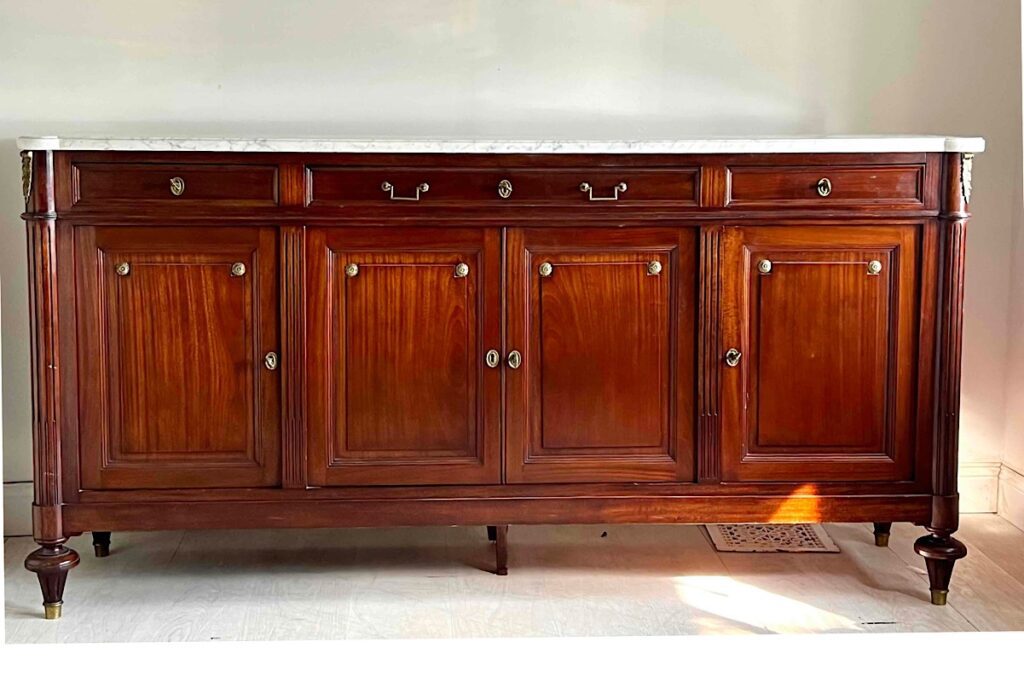
It will be perfect in a formal dining room where it will store lots of things and will be used sparsely.
I would not recommend buying a heavy, daily-use item like a dresser that has functionality issues. That can get old quickly.
Final Thoughts
I have purchased many project pieces with grandiose ideas and noble intentions of “saving” a vintage piece. Most of the time, I ran out of patience and/or time.
Buying vintage furniture is a lot of fun. There are thousands of vintage pieces available to purchase so I recommend taking your time to find a solid one that works with your lifestyle.
